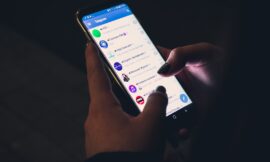When Elon Musk bought Twitter we discussed how to prepare for the curves. Five months have passed and things are more chaotic than ever in a company with a low workforce, continuous controversies and a pressing problem: achieving income. To try to fix it, Musk is resorting to desperate measures, and the latest one is a stab in the back of his usual verified users.
The “Blue Check” in the center of the hurricane. For years, Twitter had been granting a blue verification mark to the accounts that various companies, media, and personalities had on Twitter. These verifications served as a confirmation of the reputation and notoriety of those companies and accounts. Elon Musk had already tried erratically to introduce changes and even verified marks of different colors , which caused a lot of confusion.
Either you pay (and if you are a company, you will have to pay a lot) or you disappear. The underlying idea behind all these movements is to associate these “blue checks” with the new Twitter Blue subscription, but that subscription model plan to get income is being a fiasco. The summary is clear: either you pay, or you (almost) disappear, because those verified marks guarantee that messages from those accounts will appear in the “For you” tab of the service that serves as a great element of discovery of the platform. Musk has made it clear that to enjoy that advantage, users must pay for the Twitter Blue subscription, which costs between $8 and $11 a month for normal users. For companies things change:they must pay $1,000 a month.
The NYT runs out of checkmark . Twitter had already warned that as of April 1 it would begin to remove the blue checks from old accounts. A few hours ago, the Twitter account of The New York Times ( @nytimes, with 55 million followers) no longer had that verification mark, which in this case was gold. Its managers indicated last week that they would not pay a subscription to Twitter to obtain a verified mark, nor would they pay their journalists bills except in exceptional cases. The disappearance of the verified mark appears to have originated from a meme about Musk’s plan to which Musk responded. That tweet has also been deleted, though Musk has posted several tweets criticizing the NYTimes after the move.
It has been the most notorious case of a scandal that has only just begun, but also an ironic case: although the main NYTimes Twitter account has lost that verified mark, its spin-off accounts (such as @nytimestech, @nytimesbusiness or @nytimesworld) continue to having her
New message on the blue check . In addition to starting to disable the blue verification mark on some accounts, Twitter is already showing a new message in accounts that have that mark. “This account is verified because it is subscribed to Twitter Blue or it is an old verified account,” the message explains without clarifying whether it is one or the other. That makes it impossible to know if that account will end up not having that blue mark in the short term.
I will not pay for the “Blue Check” . These changes have generated a clear reaction from users who until now enjoyed that verified mark. Many of them have declared that they are not willing to pay for something like this, and among them are celebrities like Lebron James, William Shatner or Jason Alexander. The platform is especially popular among journalists —several publications are evaluating what to do—, and many of them in different media outlets that were verified are commenting on how they are not willing to pay for that option either.
Grace period. Although Twitter had warned that the blue mark would begin to disappear from accounts that did not pay as of April 1, the measure has not been carried out except in cases such as the NYTimes. A now-deleted message from Elon Musk reveals that there would be a “grace period” of a few weeks until “Blue Checks” were removed “unless they pay.”
Those who use the other advantages of the service — longer messages and videos — raise the option of having Twitter hide that verified mark. For example, the writer Jorge Corrales ( @yosoycorra ) pointed it out with a message that raises that reflection (“I don’t want people to know that I’m paying for Twitter Blue”).

